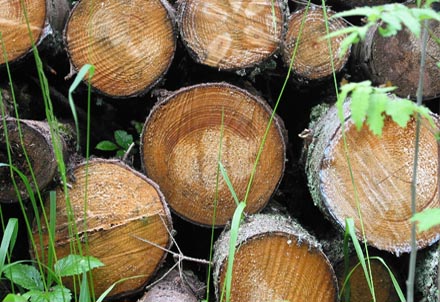Ecology

Production energy requirement of various construction materials |
|
|---|---|
Construction Material |
Production energy requirement (kWh/t) |
Brick clay |
0 - 2,5 |
Wood |
5 - 7,5 |
Lime-Stone Brick |
250 |
Concrete |
250 - 300 |
Vertical coring Brick |
450 |
Roof Tiles |
550 |
Aerated Concrete |
750 |
Cement |
1.000 |
Lime |
1.200 |
Glass |
6.000 |
Plastics |
8.200 - 20.000 |
Aluminum |
72.000 |
Wooden flooring and the environment
Wood is the only renewable raw material whose production places no stress on the environment. During their growth phase, trees absorb substantial quantities of carbon dioxide from the atmosphere. At the same time they give off oxygen. European forests are managed according to the principle of sustainability. Every year, at least as many trees are planted as are felled. Wood stocks in Europe have improved, and the land area devoted to forestry has also increased significantly..
Wood helps against the greenhouse effect
The heat-insulating properties of wood reduce air contamination by harmful materials. When using wood as a construction material, the carbon dioxide harmful to the atmosphere remains bonded in the wood, and therefore contributes to reducing the greenhouse effect. The use of wood therefore constitutes practical environmental protection!
Wood – an energy-saving construction
material
Wood as a construction material has the
lowest energy consumption for its production,
transport and processing. Wood is
also an excellent insulating material.
Wooden floors and ecology
On the basis of the latest international
standards (ISO – 14040 ff), the Technical
University of Munich has produced
an ecological balance for wooden floors
– including woodblock flooring. According
to this balance, the adverse environmental
effects throughout the service life are
extremely low. Quite the contrary in fact,
because during production and use, they
counteract the anthropogenic greenhouse
effect.
The results of the ecological balance can be requested from the publisher of this document. The use of sealing agents containing water or acrylic, and dispersion adhesives also enables environmentally-friendly processing when used with the necessary auxiliary materials.
Recycling is no problem. Even woodblock flooring treated with coatings and bonding agents can be mechanically processed back into usable wood materials or used to generate energy. The cycle is complete.
